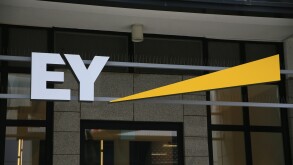Transact is one of the few underwriters located on the European continent and they have a strong presence in Benelux and France. They have seen a significant increase of the French warranty and indemnity (W&I) and tax liability insurance (TLI) market over the last few years.
Dean: Can you provide us with a little background to the French TLI market and how this has developed over the last few years?
Staffan: It initially took some time for the French market to pick up on the concept of W&I and TLI insurance. At the time, insurance was widely embraced in Benelux and particularly the Netherlands, the French were less familiar with the product and took a more ‘traditional’ approach to doing deals.
However, once the advisors and clients became accustomed with the product and the possibilities, they quickly embraced it and France is currently one of our largest markets.
Dean: Can you name a few examples of typical risks you are covering under TLI and how this has helped on French deals?
Staffan: There are a few very common risks which we encounter frequently. These can roughly be divided into real estate related risks and risks related to French entities in international structures. Of course, there can be an overlap between the two.
For real estate transactions, a common risk is what is referred to as the 3% tax. Broadly speaking, companies which either directly or indirectly hold properties located in France are required to file a specific 3% tax return. The law was essentially introduced to allow the French authorities to track the ownership of French real estate.
There are various exemptions available to taxpayers which, in practice means that the tax is levied on individuals. However, failure to file an accurate 3% tax return could result in the 3% tax becoming payable on the fair market value of the entire real estate portfolio. In French deals, this is usually a limited risk but with a high quantum, so parties are generally unwilling to accept it and TLI offers a solution to this potential deal blocker.
For international structures, we often see risk relating to so-called IFU or DAS2 tax forms. Any French company paying dividends or interest to group companies must file IFU forms, or DAS2 forms in case it includes fees or commission. Any underreported amounts are subject to a 50% penalty.
Since both forms are often filed based on the financial ledgers which may not always 100% match the financial statements used when preparing the corporate income tax return, there are often small discrepancies. If large amounts of dividend, interest or fees are paid, the quantum of the risk can get quite large, while the risk should be limited in practice. Again, this makes for a good fit with TLI.
Dean: Can you also name any areas or types of risks which are challenging to cover in France?
Staffan: For some areas of tax there is a certain perceived aggressiveness from the French tax authorities. For example, the tax authorities publish annual ‘safe harbour’ inter-company interest rates, which are on the low side of what can be considered at arm’s-length.
If a French taxpayer intends to use a higher rate the risk of a challenge is significant even if the higher rate can be defended based on a benchmark. We generally have appetite for TP risks such as this, but due to the French tax authority’s approach. This can be challenging.
Dean: Could you give us some insight into key differences between the French market and other jurisdictions?
Staffan: French deals are usually either very fast paced or relatively slow compared to other jurisdictions. This can be challenging for both the broker and the underwriter, as insurance is usually one of the last pieces of the puzzle.
Another interesting difference is that, as the French have worked less with transaction insurance generally, they are also less constrained in what they believe is achievable from the product. This results in an interesting dynamic on French transactions and we see opportunities to expand the boundaries of what is possible with TLI.
Dean: Any thoughts on the future of the TLI market in France?
Staffan: As the product matures even further and French clients and their advisors become more familiar with it, we expect TLI to be even more frequently used than it is today. As one of the largest European jurisdictions, we see a lot of potential for further growth in France.
Dean Andrews
Head of tax liability insurance, BMS Group
E: dean.andrews@bmsgroup.com











